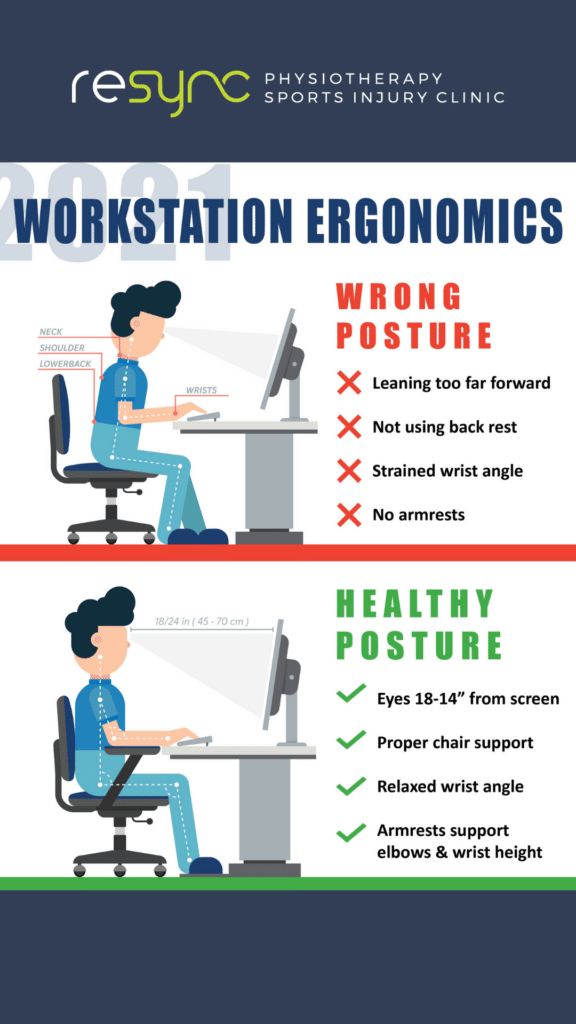Ergonomics is the scientific study of how people interact with their work environment. It is concerned with optimizing the design of equipment, tools, and workspaces to improve the safety, efficiency, and comfort of people performing work-related tasks.
There is a significant amount of scientific evidence supporting the benefits of ergonomics in the workplace. Numerous studies have demonstrated that ergonomic interventions can improve worker productivity, reduce the risk of musculoskeletal disorders (MSDs), decrease worker absenteeism and turnover, and enhance overall job satisfaction.
Ergonomic interventions can include changes to the design of workstations, tools, and equipment, as well as modifications to work practices and organizational policies. Examples of ergonomic interventions include adjusting the height of a computer monitor to reduce neck strain, providing supportive chairs and footrests to prevent back pain, and implementing frequent rest breaks to prevent fatigue.
Overall, the scientific evidence strongly supports the use of ergonomic principles in the workplace to promote worker health, safety, and productivity.

What does the evidence say about Ergonomics
Scientific evidence supporting the benefits of ergonomics in the workplace comes from a variety of sources, including experimental studies, observational studies, and systematic reviews of the literature.
Experimental studies typically involve randomly assigning workers to different ergonomic interventions and then measuring the effects on various outcomes, such as productivity, injury rates, or worker satisfaction. For example, one study found that adjusting the height of computer monitors to reduce neck strain led to a 45% reduction in neck and shoulder pain among workers, as well as a significant improvement in productivity and job satisfaction.
Observational studies, on the other hand, involve observing workers in their natural work environment and measuring various outcomes before and after an ergonomic intervention. For example, one observational study found that providing ergonomic chairs and keyboards to call center workers reduced the incidence of musculoskeletal pain by 80% over a two-year period.
Systematic reviews of the literature involve synthesizing the results of multiple studies on a particular topic to determine the overall strength of the evidence. For example, a systematic review of the literature on the effectiveness of ergonomic interventions for preventing MSDs found that such interventions were associated with a significant reduction in the incidence of MSDs among workers.
Overall, the scientific evidence strongly supports the use of ergonomic principles in the workplace to promote worker health, safety, and productivity. This evidence comes from a variety of rigorous scientific studies and provides a solid foundation for the design and implementation of effective ergonomic interventions in the workplace.
How old is that evidence for ergonomics
The evidence supporting the benefits of ergonomics in the workplace has been accumulating for several decades. The earliest scientific studies on ergonomics date back to the 1950s and 1960s, but the field has grown and expanded significantly since then.
Over the past several decades, a large number of studies have been conducted on the benefits of ergonomic interventions in various workplace settings, including office environments, manufacturing facilities, healthcare settings, and transportation industries. These studies have used a variety of research designs and methods, including experimental and observational studies, as well as systematic reviews of the literature.
While the specific findings of individual studies may vary, the overall body of evidence consistently supports the benefits of ergonomics in promoting worker health, safety, and productivity. This evidence is continuously being updated and expanded as new studies are conducted and as the field of ergonomics continues to evolve.
What is physiotherapys opinion on ergonomics
Physiotherapists are healthcare professionals who specialize in the diagnosis and treatment of musculoskeletal and movement-related conditions. As such, they have a strong interest in ergonomics, as it is directly related to the prevention and management of musculoskeletal disorders (MSDs).
Overall, physiotherapists generally have a positive opinion of ergonomics and its role in promoting worker health and safety. They recognize the importance of ergonomic principles in preventing and managing MSDs, as well as in improving worker productivity and job satisfaction.
Physiotherapists may work directly with individuals who have developed MSDs related to their work environment, and may use ergonomic interventions as part of their treatment plan. They may also work with employers and organizations to design and implement effective ergonomic interventions in the workplace.
In addition to their clinical work, many physiotherapists are involved in research related to ergonomics and MSD prevention. They may conduct studies on the effectiveness of different ergonomic interventions, as well as on the prevalence and risk factors for MSDs in various workplace settings.
Overall, physiotherapists play an important role in promoting the use of ergonomic principles in the workplace, and their opinions are generally supportive of the scientific evidence supporting the benefits of ergonomics for worker health, safety, and productivity.

Resync Physiotherapy Top tips on Ergonomics
Having an ergonomic assessment is good to prevent injuries. To have good movement literacy it is important to be able to sit and move in many ways, not ONLY ones directed by Ergonomic assessments. Having a rigid structure of how to sit can help and hinder your mobility.
Our advice is to
- Sit in the most comfortable position
- Pull yourself close to the desk
- Have your elbow on the desk to support your upper limb
- Lie back into the chair and allow it to support your weight.
If you are still struggling with pain after following these steps then it may be best to ask your employer for an ergonomics assessment or be seen by a physiotherapist to help get to the root cause of your pain.
Physiotherapy can provide manual therapy to reduce pain, strengthening exercises to prevent reinjury and advice regarding your desk setup
Diarmuid Hegarty
Clinical Director ReSync Physiotherapy

